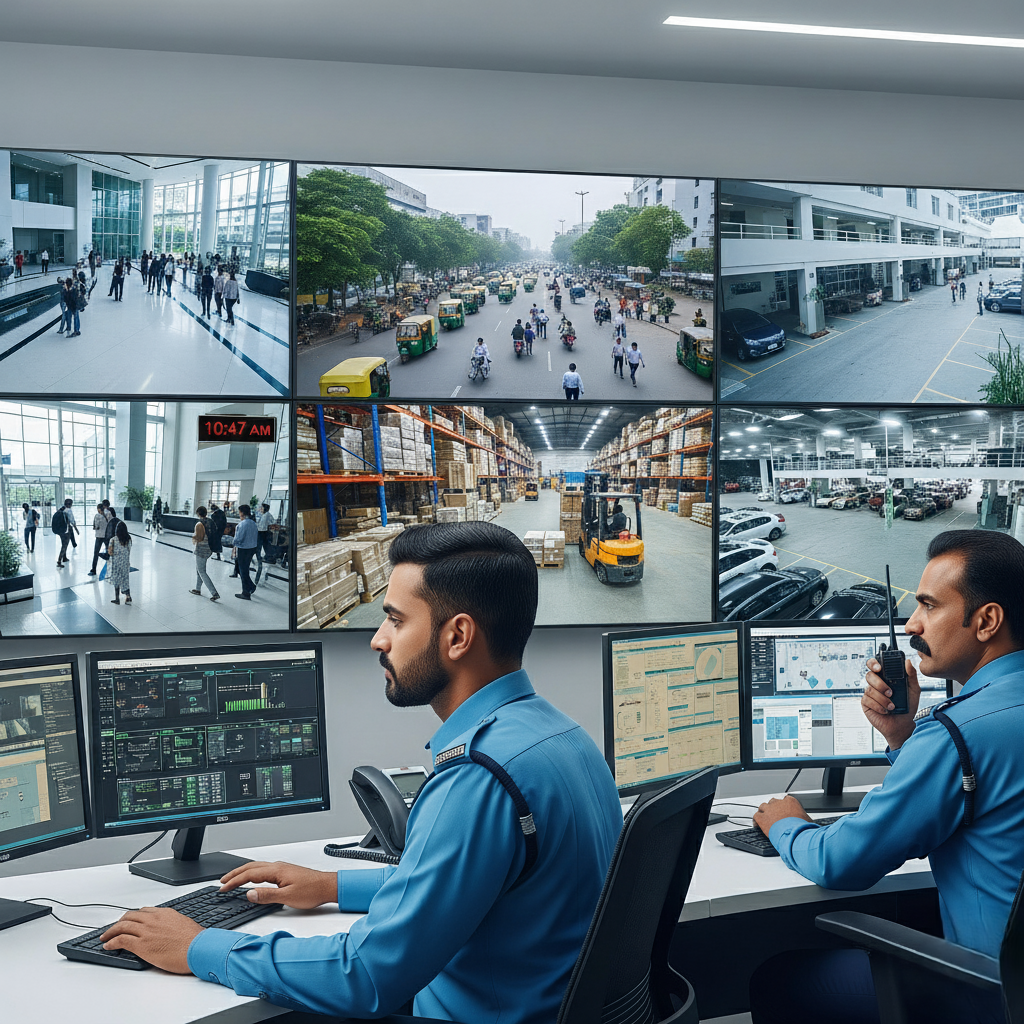In the fast-paced world of business, it’s easy to adopt a mindset of “if it isn’t broken, don’t fix it.” This is especially true for security protocols, which often operate silently in the background. Many business owners assume their existing measures are sufficient until the day they are not—and by then, it’s too late. The reality is that security is not a static installation; it’s a dynamic strategy that must evolve with your business, technology, and the threat landscape.
Waiting for a catastrophic breach to reassess your security is a recipe for disaster. The warning signs are often present long before an incident occurs, hiding in plain sight within your daily operations. Ignoring them is a gamble with your company’s assets, reputation, and future. If you find yourself nodding in agreement with any of the following points, it’s a clear signal that the time to upgrade your security protocol is now.

1. You’re Still Relying on Traditional Locks, Keys, and Paper Logbooks
The classic lock and key have served us for centuries, but in a modern business context, they represent a significant vulnerability. Consider the common scenarios: an employee loses a key or leaves the company without returning it. Your only recourse is to undertake the expensive and disruptive process of changing the locks and reissuing keys to everyone. Furthermore, a physical key offers no audit trail. You have no record of who accessed a sensitive area or when, leaving you blind in the event of an internal theft or incident.
Similarly, a paper-based visitor logbook at the reception desk is an outdated relic. It’s easily misplaced, illegible, and offers no way to verify a visitor’s identity or ensure they have left the premises.
The Upgrade: Modern Access Control Systems replace physical keys with credentials like key cards, fobs, or even biometrics. With a few clicks, you can grant or revoke access for any individual, at any door, at any time. Every entry attempt is logged, providing a complete, time-stamped audit trail. Complementing this with a Digital Visitor Management System (VMS) streamlines the check-in process, captures accurate visitor data, prints professional badges, and provides real-time tracking of who is in your building.
2. You’ve Experienced a “Close Call” or a Minor Breach
Perhaps an employee’s laptop containing company data was stolen from their car. Maybe a phishing email made the rounds, and one person almost clicked the malicious link. Or maybe a former employee was able to access their old email account for a week after they left. These “close calls” are not lucky breaks; they are urgent warnings. They are symptoms of underlying weaknesses in your security protocol.
Dismissing these incidents as one-offs is a critical mistake. Each close call is a free lesson on how your system can be exploited. It highlights gaps in your cybersecurity training, weaknesses in your offboarding process, or insufficient endpoint security. A minor breach that resulted in minimal damage is simply a trial run for a larger, more devastating attack.
The Upgrade: Treat every security incident, no matter how small, as a catalyst for a full review. Conduct a root cause analysis. Was the issue a technological failure, a procedural gap, or human error? Use the findings to strengthen your defences. This could mean implementing stricter password policies and Multi-Factor Authentication (MFA), investing in better anti-malware software, or, most importantly, launching a comprehensive and ongoing security awareness training program for all employees.
3. Your Business Has Significantly Grown or Changed
The security system that was perfect for your 10-person startup in a single-room office is dangerously inadequate for a 100-person company spread across multiple floors or locations. Growth introduces complexity, and complexity creates new vulnerabilities. More employees mean more potential points of failure. More physical space means a larger area to secure.
The recent shift to hybrid and remote work models is another major change. When employees access your sensitive company network from their home Wi-Fi on personal devices, your security perimeter is no longer your office walls—it extends into every employee’s home.
The Upgrade: Your security strategy must be scalable. As you hire more staff, you need an access control system that makes it easy to manage permissions. As you expand your office, a comprehensive CCTV plan is required to cover all blind spots. For a distributed workforce, a robust cybersecurity framework is non-negotiable. This includes mandatory Virtual Private Network (VPN) usage for remote access, centrally managed endpoint protection for all devices, and clear policies on data handling outside the office.
4. Your Industry Regulations Have Become Stricter
Compliance is a major driver of security. In India, the introduction of the Digital Personal Data Protection (DPDP) Act has placed significant responsibility on businesses to protect user data. Similar regulations exist across various sectors, from finance (RBI guidelines) to healthcare. An outdated security protocol doesn’t just leave you vulnerable to breaches; it leaves you vulnerable to severe legal and financial penalties for non-compliance.
Regulators and clients alike are increasingly demanding proof of robust security measures. Being unable to demonstrate compliance can result in losing out on major contracts, facing hefty fines, and suffering reputational damage.
The Upgrade: Conduct a thorough compliance audit. Map your current security practices against the requirements of all relevant regulations. This process will often reveal gaps in data encryption, access logging, or data storage policies. Upgrading your security protocol to meet these standards is not just about avoiding fines; it’s about building trust and demonstrating corporate responsibility.
5. Employee Turnover is High or You Handle Highly Sensitive Data
The human element is often the weakest link in any security chain. In an environment with high employee turnover, the risk of security lapses skyrockets. Each departing employee represents a potential loose end—do they still have access to any systems? Have all company assets been returned? This constant churn puts immense pressure on your HR and IT offboarding processes.
Furthermore, if your business handles sensitive information—be it intellectual property, financial records, client data, or strategic plans—you are a high-value target for both external and internal threats. The potential damage from a breach is exponentially higher, making a basic security setup a reckless gamble.
The Upgrade: A stringent security protocol is essential. This starts with thorough pre-employment background checks. It requires implementing the Principle of Least Privilege, ensuring employees only have access to the data and systems absolutely necessary for their jobs. For offboarding, a formal, non-negotiable checklist must be followed to terminate all access immediately upon an employee’s departure. For businesses with sensitive data, advanced measures like Data Loss Prevention (DLP) software and regular security audits are critical investments.
If these signs feel familiar, the message is clear. It’s time to move security from the bottom of your to-do list to the top of your strategic agenda. Upgrading your protocol is not an expense—it’s an essential investment in the stability, resilience, and future of your business.


